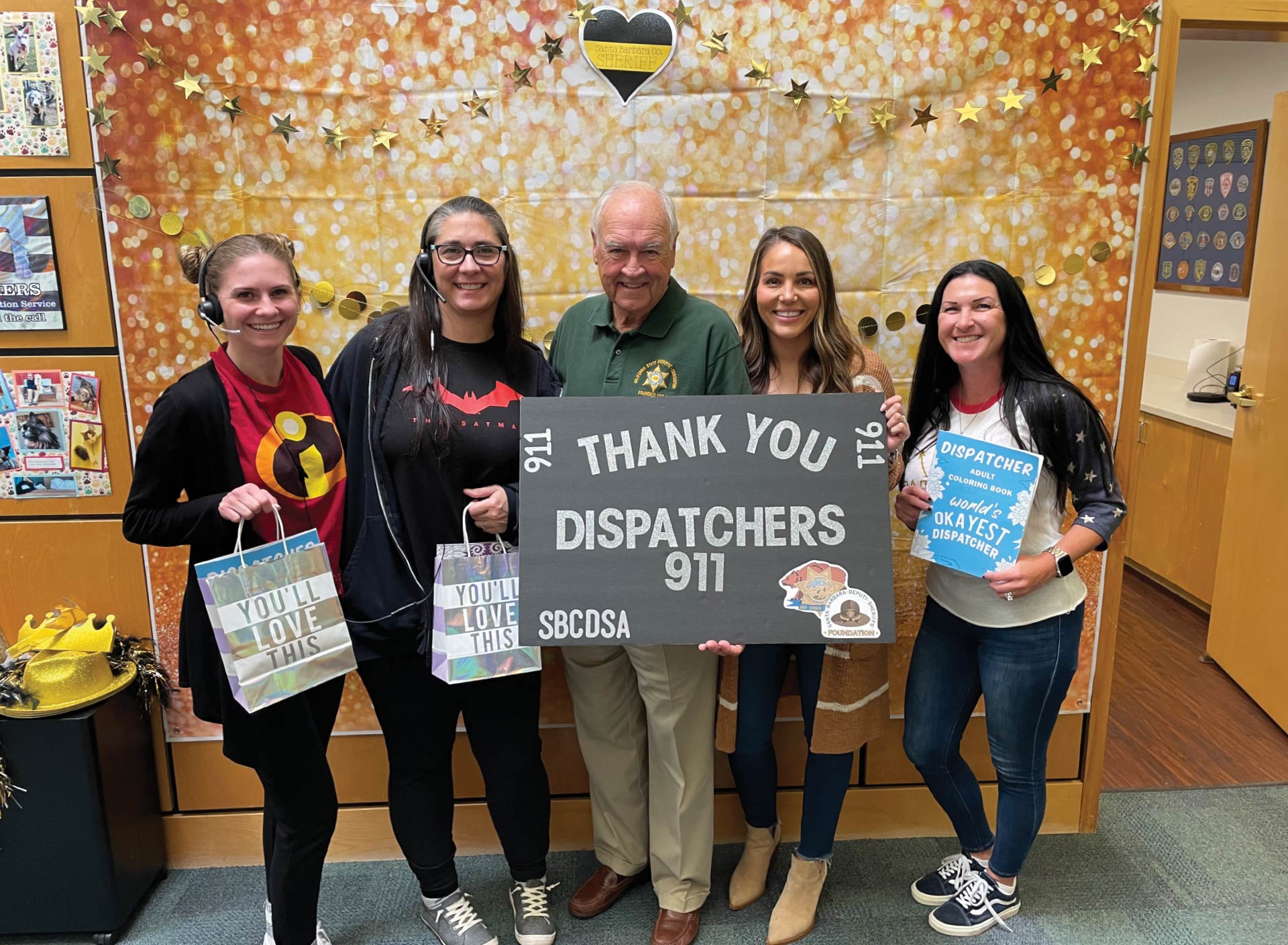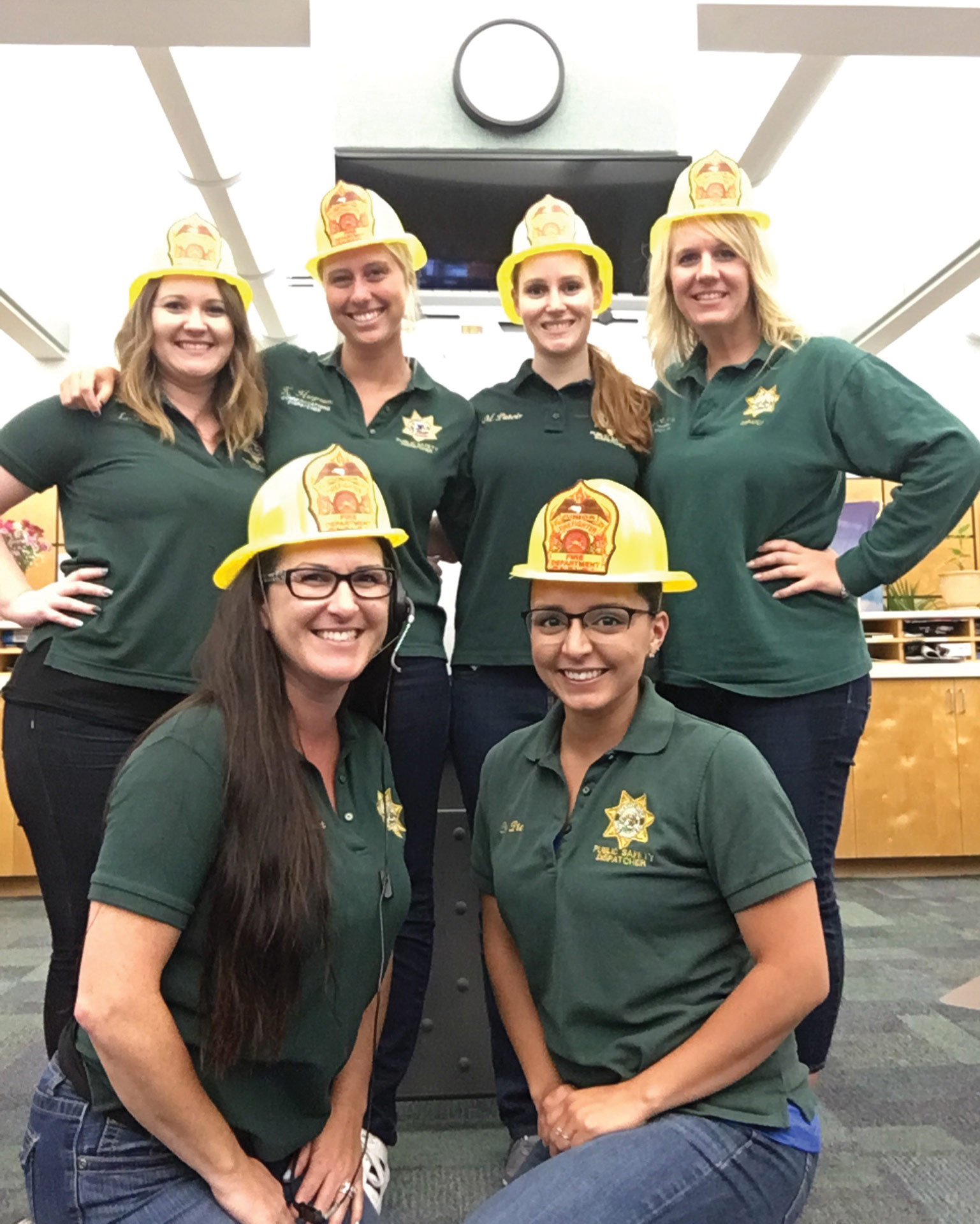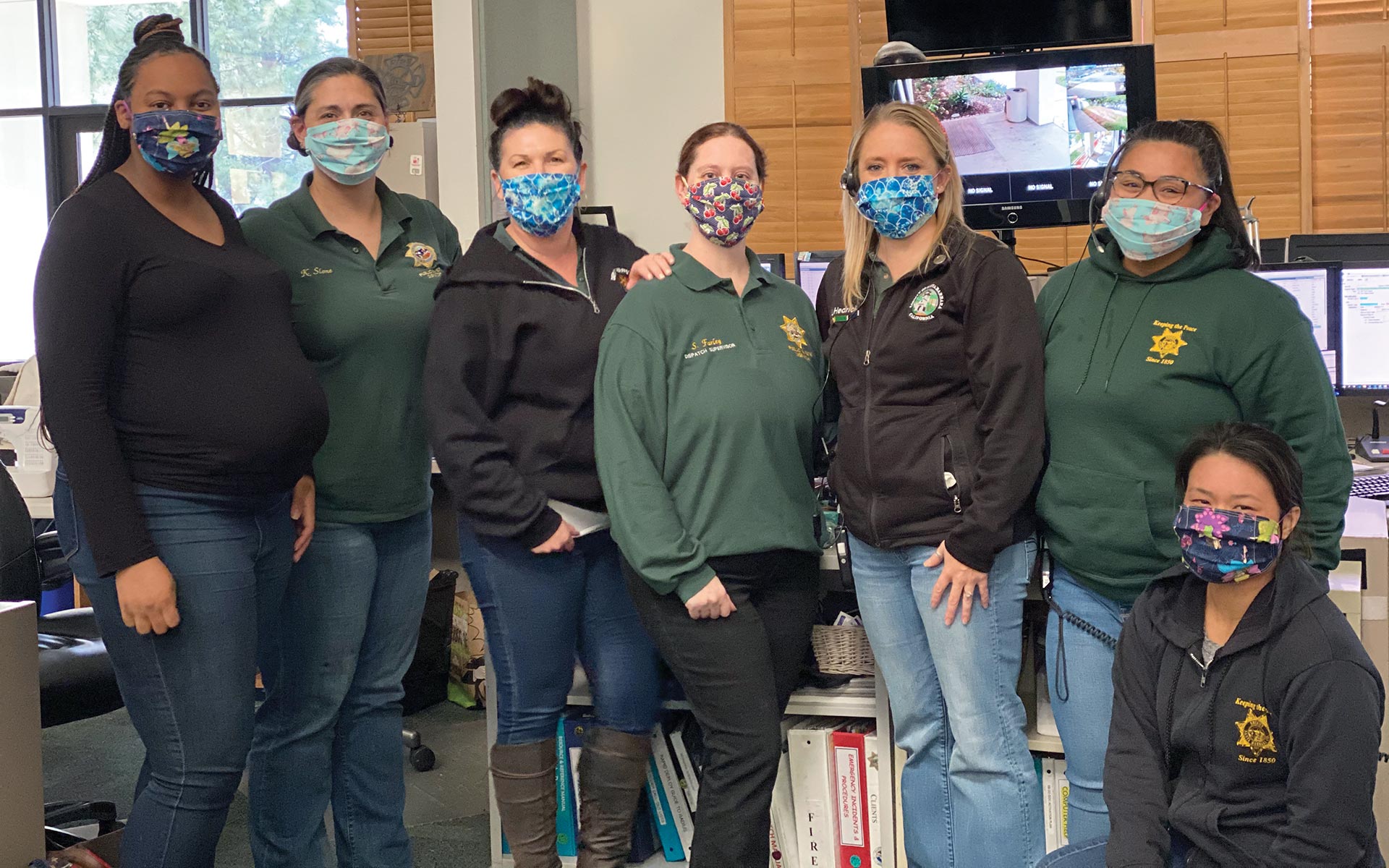

Often described as “chaos coordinators,” dispatchers play a crucial role in public safety. They serve as the first point of contact in an emergency, answer calls for help, dispatch responding personnel and equipment, and provide lifesaving assistance in times of need.
Since President Bill Clinton officially proclaimed the second week of April as National Public Safety Telecommunicators Week in 1994, law enforcement groups around the country have spent this time showing appreciation for this hardworking, skilled group of first responders. In honor of this year’s celebration, which occurs April 9–15, PORAC shines the spotlight on Director Jazzmine DeForest of the Tri-Counties Chapter, who works as a dispatch training supervisor at the Santa Barbara County Sheriff’s Office. DeForest and her fellow dispatchers are the “first first responders” who are tasked with creating a picture of what patrol units are responding to and making sure they provide officers with as much information as possible so they can take any and all safety precautions.
“Answering any line in the dispatch center, whether it’s a 9-1-1 or non-emergency line, comes with an enormous amount of responsibility,” DeForest says. “We literally hold people’s lives in our hands every day. In addition to deciphering what exactly is going on and where it is occurring, we also have to ensure responder safety by obtaining information about weapons, drug and/or alcohol use, and any mental health concerns.”
DeForest adds that callers are often in such a heightened emotional state that they are unable to answer basic questions such as what their address is, what their phone number is and what they just experienced. “It is our responsibility to extract that information by remaining calm, cool and collected,” she says.
From a young age, DeForest knew she wanted to be a first responder. In junior high school, she wrote a paper about wanting to be a firefighter when she grew up. By 18, she received her EMT license and was volunteering in the evenings at the Santa Barbara Cottage Hospital emergency room, where she “changed linens, restocked supplies and wheeled pregnant women up to labor and delivery.”
“When I saw the job listing for emergency communications dispatcher, I was immediately interested,” she shares. “The Santa Barbara County Sheriff’s Office Communications Center not only dispatches law enforcement, but they are also the dispatch center for American Medical Response (AMR) throughout Santa Barbara County and Santa Barbara County Fire, and provide pre-arrival emergency medical instructions.”
As a dispatch training supervisor, DeForest ensures all dispatchers and call takers remain in compliance with California Peace Officer Standards and Training (POST) and emergency medical dispatching requirements, both of which require a certain amount of training hours every two years. She also facilitates the SBCSO’s online quality assurance program and runs the new hire training program.
“Once a dispatcher or call taker is hired, I conduct a classroom phase that runs approximately one month and preps them to be handed off to their respective communications training officers (CTO),” DeForest explains. “Once they’re training on the floor, I monitor their progress via the daily observation reports written by their CTO, calculate their training hours, assist the CTOs with any concerns or challenges that arise and write their quarterly employee performance reviews until they successfully pass the training program and probation. When the training supervisor position became available, I put in for it immediately.”
Part of what’s made DeForest successful in her role is the passion she has for training and teaching the next generation of dispatchers. “I take immense pride in what we do as a profession, and I dedicate a lot of time and effort into instilling that same level of pride and work ethic into our new employees.”
DeForest’s time and dedication come at a crucial time, as staffing levels continue to be one of the greatest challenges facing the profession. “What we do on a daily basis requires an exorbitant amount of compassion, professionalism, dedication, multitasking and thick skin,” she says. “Finding people who have all those traits and can survive the fast-paced and stressful environment is really difficult.”
DeForest adds that the lack of closure on many of the calls is another challenge many dispatchers face. “We oftentimes never find out a patient’s outcome unless we take the time to track down the medics who transported the patient, but even then, after they arrive at the hospital, we usually don’t find out anything else.”
For those who want to see what it’s really like to be a dispatcher, DeForest believes spending a day at a local dispatch center could really bring newfound appreciation for what these dedicated personnel do on a daily basis. “You will witness a dispatcher give CPR instructions to a hysterical mother and, without skipping a beat, pick up another 9-1-1 call involving neighbors fighting over property lines,” she says. “Being able to use the same reassuring tone and professional demeanor to both situations is a skill that sets a dispatcher apart from other ‘clerical’ positions.”
In a profession that DeForest admits receives very few accolades, she believes that National Public Safety Telecommunicators Week provides a unique opportunity for agencies to show “how much they appreciate the men and women doing the heavy lifting on the other side of the phone and radio,” she says. “I love how our center and user agencies come together and go all out during that week. Our manager coordinates dress-up days, we exchange tokens of appreciation with our neighboring dispatch centers and there is enough food throughout the week to feed us for a month! Very few careers can offer the satisfaction of making a difference every single day. I am honored to be part of a team that has shown up in a big way throughout numerous significant incidents.”

